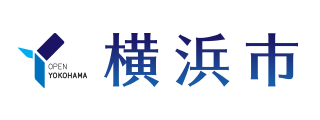Here's the text.
Class 3 Dangerous Goods Fires
Last Updated July 10, 2024
Overview
For fires caused by metal-type third-class hazardous materials such as lithium and potassium, injured may occur, such as igniting surrounding combustibles if the handling method is incorrect, even if only a small amount of hazardous materials, which are the source of ignition.
Class 3 dangerous materials have spontaneous and water-free properties, and fire extinguishing methods are limited.Therefore, once a fire occurs, appropriate fire extinguishing work is performed using a fire extinguishing agent that accurately responds to the substance is needed.
Business establishments handling Class 3 dangerous goods are requested to refer to the following items to ensure proper management and handling.
Cases of fires caused by Class 3 dangerous goods
Lithium (Li) Fire
When the lithium adhering to the lithium reactor was cleaned at the research facility, it was accidentally soaked in water, causing flames and sparks along with the sound of explosions, ignitinginjured.
Potassium (K) Fire
While potassium in the laboratory was being washed with toluene at the research facility, it was accidentally soaked in water and ignited surrounding combustibles.
Characteristics and Handling of Class 3 Dangerous Goods
Class 3 hazardous materials include solids or liquids that ignite spontaneously in the air (spontaneously ignites (e.g. yellow phosphorus)), ignites in contact with water, or generates flammable gas (e.g., lithium) and those that have both spontaneous and water-free properties (e.g., sodium and potassium).
Regarding storage, handling and transportation, spontaneous flammable substances need to avoid approaching or heating with the fire source and prevent them from touching the air. In addition, water-free substances need to avoid contact with water, and storage should be subdivided. All substances need to be careful not to place combustible materials around them.
How to extinguish dangerous goods in Class 3
Class 3 Dangerous goods that are generally considered to be effective in extinguishing dangerous goods include dry sand, expanding stones, or expanding pearl rock.
About notification to firefighting when handling Class 3 dangerous goods
Dangerous goods under the Fire Services Act are specified by a Cabinet Order on Dangerous Goods Regulations. The designated quantity of dangerous goods in Class 3 ranges from 10 kg to 300 kg depending on the product name and nature.
When storing or handling dangerous goods, permission or notification is required depending on the quantity.
- When the ratio to the designated quantity is 1 or more ... Permission or approval by the Fire Services Act
- When the ratio to the designated quantity is 0.2 or more and less than 1: Notification by the Yokohama City Fire Prevention Ordinance (small quantities of dangerous goods)
In addition, when storing or handling multiple dangerous goods, the ratio to each designated quantity will be added.
Inquiries to this page
Fire Bureau Prevention Department Security Section
Telephone: 045-334-6407
Telephone: 045-334-6407
Fax: 045-334-6610
Email address: sy-hoan@city.yokohama.lg.jp
Page ID: 317-622-579







